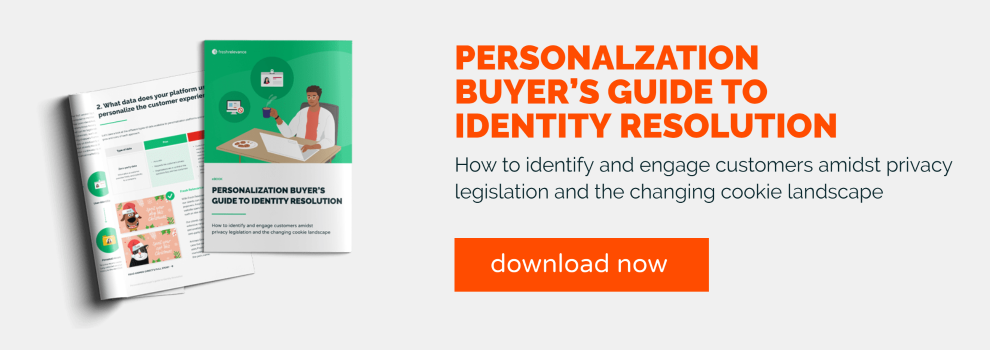Zero-party data is the data that your customers willingly share with you, for example when they enter their email address in a popover in exchange for a welcome voucher. Zero-party data is an effective way to enhance personalization tactics, but how do you entice customers to share their information with you? Enter gamification.
We spoke with Richard Robinson, general manager at Leadfamly, about the benefits of gamification. If you missed out on the live webinar, you can catch-up on demand. In the meantime, here are our collective pearls of wisdom.
The power of gamification
As humans, our brains are hardwired for games. When playing, they release certain hormones which influence (and increase!) our happiness.
There are 5 core elements to game mechanics which affect these hormones.
1) Competition
This is the backbone of gamification. Humans are hardwired to want to compete – and win! Use this to your advantage.
2) Challenge
Do you ever feel satisfaction after completing a hard task? This is a powerful way to drive huge amounts of engagement.
3) Mirroring
People tend to like to know where they stand amongst others – even if that’s not in the winning position. There is huge comfort in that sense of belonging when it comes to knowing what ranking or type you are and which crowd you are part of.
4) Rewards
These don’t have to be monetary. In fact, they can be as simple as feedback or insights not known by the customer before. You can almost never go wrong with a gift voucher or money off discounts as well, though.
5) Fun
This is a great value exchange with consumers! You can spend time with your customers and collect data in exchange for them doing something that’s enjoyable.
4 real-life examples – and why they work
1) Dynamic content
Richard shared an example from W7, a makeup and cosmetics company. The company collected zero-party data using a ‘Who will you be today?’ game on their homepage. Customers could swipe images in one of two directions, depending on which look they preferred, and afterwards were prompted to give their name and email address. Once they had given this information, they were presented with a makeup look that would suit them, and the website content could be personalized for them specifically.
This tactic was successful because it had that ‘fun’ factor for the customers, in exchange for valuable data like their color preferences and their email address for future offers and other crucial marketing techniques.
2) Boosting product discovery
Another example Richard highlighted was from Vero Moda, a European fashion brand. The company designed a personality style quiz where customers answered questions based on their fashion taste, but also the type of things they like to do on a Saturday night, and more.
This meant the company was able to create a unique persona using the data collected, and they were able to show the customer a look based on their answers. The specific clothing items of the look were linked so customers could immediately find what they were looking for.
This campaign resulted in 30 times the return of advertising spend and the average customer engagement with the quiz was two minutes. In this way, the company was able to learn more about their customers and their needs, build that relationship with them and offer them the best recommendations.
3) Re-engaging existing customers
A great way to re-engage existing customers is with dynamic coupons, such as birthday emails. Birthday emails generate 342% higher revenue rates per email than promotional emails, making them a tactic worth trying.
By combining first- and zero-party data, you can personalize these emails one step further; you can send coupons alongside product recommendations based on the customer’s most frequently browsed products or their favourite purchase category.
Learn more about the different types of data collection and what you can do with them: 4 types of data that power personalization platforms.
4) Location-based experiences
In Richard’s final example, he discussed a campaign run by Coop in Denmark. It involved a mobile app with a luck-type game, in which your winnings could be redeemed in-store. In its first year, the game was played more than 10 million times, and 1 million game samples were picked up in-store.
By using fun as an element, the company was able to drive customers to their brick and mortar store in a creative, enjoyable way.
Final thoughts
Building your own data sets is vital for your business – especially in the wake of the “cookie apocalypse”. It is important to future-proof your business, but also to build that valuable relationship with your customers. Gamification has proven to be a great way to collect this zero-party data and foster that trust, as customers are much more willing to share their details if there is a reward for them to do so, and if they have fun doing it.
By combining your zero-party data with first-party data, you can enhance the customer experience and tailor every part of the journey to each customer specifically. For example, you can gather behavioral data to find category affinities, and use zero-party data the customers give to hone in on the exact products they are looking for. You can use dynamic banners in your email based on the products they browse, with name personalization in the banner from the information they gave you. There are endless possibilities.
Special thank you to Richard Robinson for such a brilliant webinar.
Learn more about data collection and how to future-proof your business: Personalization buyer’s guide to identity resolution.







